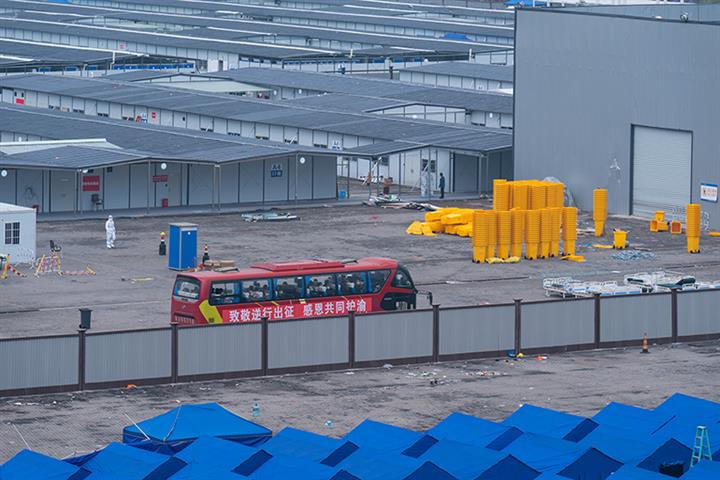 How Will Chinese Local Gov't Special Bonds for Makeshift Hospitals, Quarantine Sites Be Repaid?
How Will Chinese Local Gov't Special Bonds for Makeshift Hospitals, Quarantine Sites Be Repaid?(Yicai Global) Dec. 5 -- Over 100 county-level Chinese governments have issued special bonds since the start of the year to finance the building of makeshift hospitals and Covid-19 quarantine stations. But how can such unprofitable ventures be repaid?
Most of the bonds are not large, at under CNY100 million (USD14.4 million) each, according to over 50 such special bond applications seen by Yicai Global. The largest is CNY440 million (USD63.2 million). They are usually classed as utility and industrial parks and some are labelled as investments in the medical and healthcare sectors.
They only make up a small part of the more than CNY4 trillion (USD574.8 billion) worth of special bonds issued on the mainland this year, which are usually used to finance transport, utility energy and infrastructure projects. As such, they remain an exploratory move.
Many local governments are facing a big gap between fiscal income and expenditure this year, a special bond consultant told Yicai Global. Therefore, some are choosing to fund the construction of makeshift hospitals and quarantine centers by issuing special bonds rather than using fiscal income.
Future Returns
The makeshift hospitals and quarantine sites are eligible for special bond issuances as the income generated in the future will cover the bonds' principal and interests, all the application papers said.
The principal and interest of all special bonds must be repaid, a bond market expert told Yicai Global. It is not appropriate to issue special bonds without expected returns, he added.
But where will the returns come from? Makeshift hospitals and quarantine centers generate very little income when they are open, although some do charge for meals.
Most of the returns will come from rent after the pandemic, according to the documents seen by Yicai Global. Therefore, how quickly the facility can pay back the bond depends on an accurate forecast of how long the pandemic will last.
These so-called post-pandemic returns comprise fixed annual rents collected from turning the facilities into hotels, office buildings, shops, warehouses, old age homes and exhibition halls. Many local governments also proposed renting out medical devices and leasing the grounds as parking lots.
Wild Assumptions
Some third-party bodies responsible for authoring the assessment reports on behalf of local governments made explicit assumptions on how long the pandemic will last in order to make it easier to predict a return, while others were more vague.
According to one accounting firm, which was evaluating the feasibility of a 15-year special bond of CNY274 million (USD39.4 million) for a makeshift hospital, it estimated that the facility would be used for epidemic control for three years, after which it will be a for-project project for the next 12 years.
In another assessment report for a quarantine site in a different city, the accounting firm projected that the pandemic would last until 2027, and that over the next five years, there would be outbreaks for 140 days of the year during which time the facility would be able to draw an income from catering to the patients, parking and looking after the elderly. By 2028 the pandemic would have disappeared completely.
All assumptions need to have a basis. There are no grounds to support the accounting firm’s assumption that outbreaks will occur 140 days out of the year, an expert in local government bond issuance told Yicai Global.
Uncertain Risks
The debt service coverage ratio, which is the proportion between expected returns and the sum of the bond's principal and interest, is a key indicator to measure the risk of a special bond. The higher the ratio, the lower the risk. Anything over one means that the return will be sufficient to repay the bond. And most local governments require a ratio of over 1.2.
The debt service coverage ratio for the makeshift hospitals and quarantine centers was mostly between 1.2 and 1.4, and the highest was 2.5, according to the documents.
Local governments need to make sure that the returns from makeshift hospitals and quarantine centers can really cover the bonds’ principal and interest, the bond expert said. They also need to make provisions for debt repayments to prevent risks of default. For medical facilities that haven't yet broken ground, local governments can divert the funds to other projects, if necessary, he added.
Editors: Tang Shihua, Kim Taylor